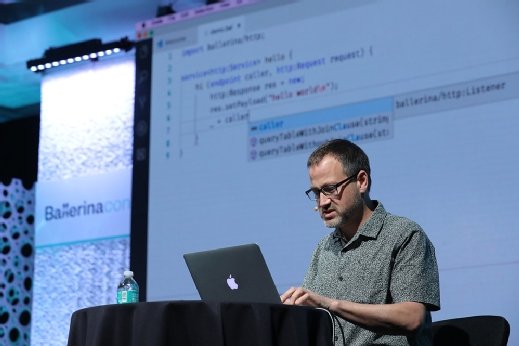WSO2 integration platform twirls on Ballerina language
The latest release of WSO2's flagship integration platform aims to help enterprise developers build and implement microservices.
The latest version of WSO2's open source integration platform strengthens its case to help enterprises create and execute microservices.
The summer 2018 release of the WSO2 Integration Agile Platform, at the company's recent annual WSO2Con user conference, supports what the company calls an "integration agile" approach to implement microservices. Software development has moved to an agile approach, but legacy Waterfall approaches can stymie the integration process, and WSO2 aims to change that.
Solving the integration challenge
Integration remains a primary challenge for enterprise IT shops. The shift of automation functions to the public cloud complicates enterprises' integration maps, but at the same time, enterprises want to use microservices and serverless architectures, which require integration architectures, said Holger Mueller, an analyst at Constellation Research in San Francisco.
Improvements to the WSO2 integration platform, such as integration of the WSO2 API management, enterprise integration, real-time analytics and identity and access management options, aim to help enterprises adopt agile integration as they move from monolithic applications to microservices as part of digital transformation projects. The company also a licensing structure for enterprises to scale their microservices-based apps.
In addition, WSO2 Integration Agile Platform now supports the open source Ballerina programming language, a cloud-native programming language built by WSO2 and optimized for integration. The language features a visual interface that suits noncoding business users, yet also empowers developers to write code to integrate items rather than use bulky configuration-based integration schemes.
"Ballerina has a vaguely Java-JavaScript look and feel," said Paul Fremantle, CTO of WSO2. "The concurrency model is most similar to Go and the type system is probably most similar to functional programming languages like Elm. We've inherited from a bunch of languages." Using Ballerina, University of Oxford students finished projects in 45 minutes that typically took two hours in other languages, Fremantle said.
Some early Ballerina adopters requested more formal support, so WSO2 now offers a Ballerina Early Access Development Support package with unlimited query support to users, but this is only available until Ballerina 1.0 is released later this year, Fremantle said. Pricing for the package is $500 per developer seat, with a minimum package of five developers.

Integration at the heart of PaaS
Integration technology is central functionality for all PaaS offerings that aim to ease enterprise developers and DevOps pros into microservices, serverless computing, and even emerging technologies like blockchain, said Charlotte Dunlap, an analyst at GlobalData in Santa Cruz, Calif. WSO2 offers a competitive open source alternative to pricier options from larger rivals such as Oracle, IBM, and SAP, though it's more of a "second tier" integration and API management provider and lacks the brand recognition to attract global enterprises, she said.
Nevertheless, Salesforce's MuleSoft acquisition earlier this year exemplifies the importance of smaller integration vendors. Meanwhile, Red Hat offers integration and API management options, and public cloud platform providers will also build out these services.







